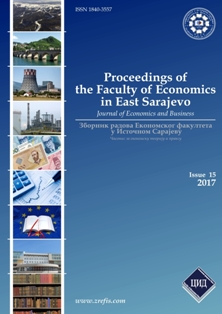INFLUENCE OF DEMOGRAPHIC TRENDS AND EMPLOYMENT ON THE FINANCIAL SUSTAINABILITY OF THE MONTENEGRIN PENSION SYSTEM
DOI:
https://doi.org/10.7251/ZREFIS1715039RAbstract
The aim of this research is to analyze theimpact of employment on the sustainability of the
Montenegrin pension system. The paper discusses the impact
of demographic trends on the stability of pension system
financing. The stability projection of the pension system is
based on demographic trends and the change in the level of
employment on the labor market. The research method
included the analysis of extensive statistical material, the
research of the latest published papers regarding the
subject, as well as a comparative overview of the pension
systems of the transition economies.
Research of demographic trends indicates that in the first
half of the 21st century, the population aging process will be
one of the most important features of Montenegro's
demographic development. The aging of the population will
affect the increase in costs for dependents or persons over
65 years old, primarily those costs that are being distributed
from current fiscal revenues.
Current pension system is financially unsustainable in shortterm
and medium-term, given the rate of activity on the
labor market (53.7%) and employment (44%). In order for
the existing system to be sustainable, the activity level of the
population should be 61% and the level of employment
should amount to 51%. By analyzing the projection
alternatives, we note that the sustainability of the pension
system in the long run requires intensive economic growth
and development that will lead to an increase in long-term
labor market activity as well as a smaller increase in the
number of pensioners and an increase in inflows from
contributions. Thus, this should all lead to a reduction in the
deficit of the pension system.
Downloads
Published
2018-02-19
Issue
Section
Чланци

